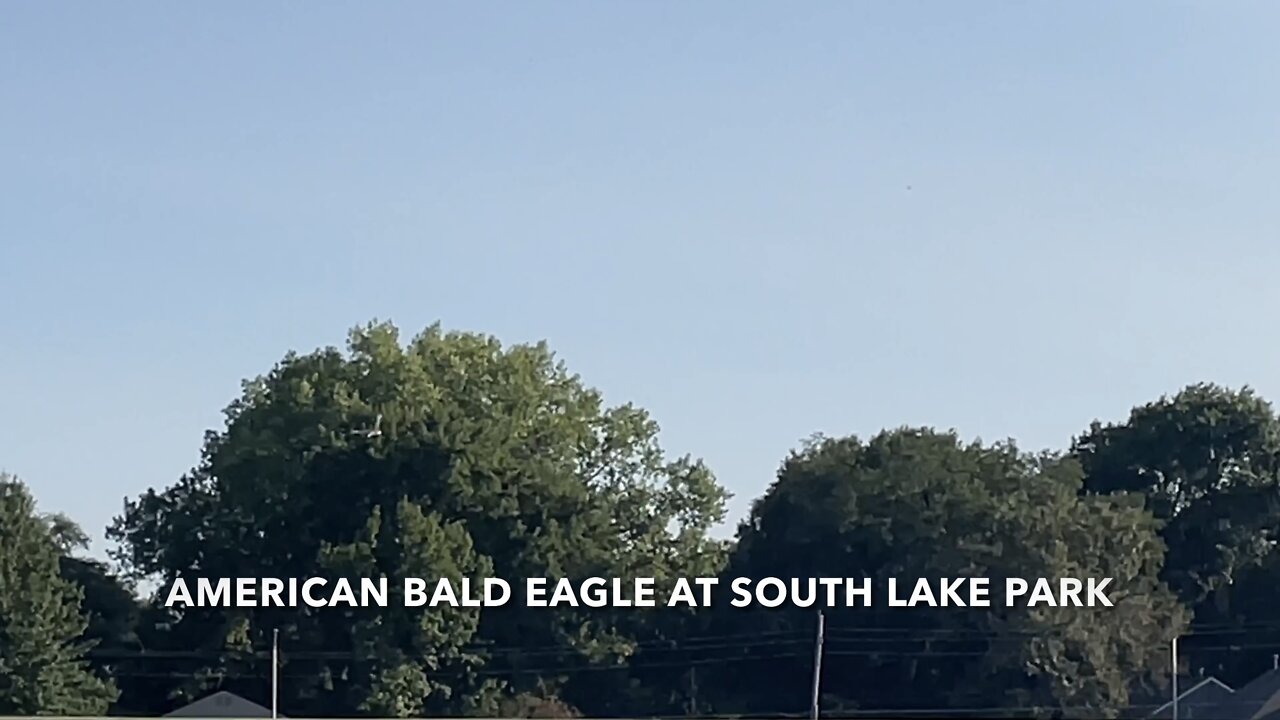Premium Only Content

American Bald Eagle At South Lake Park
While riding my e-bike at South Lake Park, I heard some kid across the lake claim that he spotted a bald eagle flying overhead. I thought he he was probably mistaken, it most likely being a vulture or a hawk instead. But when I spotted the bird in the sky, I noticed that it was indeed an American Bald Eagle. So I quickly got out my camera and took this footage. Quite a rarity in Kansas, I would say.
Wikipedia:
The bald eagle (Haliaeetus leucocephalus) is a bird of prey found in North America. A sea eagle, it has two known subspecies and forms a species pair with the white-tailed eagle (Haliaeetus albicilla), which occupies the same niche as the bald eagle in the Palearctic. Its range includes most of Canada and Alaska, all of the contiguous United States, and northern Mexico. It is found near large bodies of open water with an abundant food supply and old-growth trees for nesting.
The bald eagle is an opportunistic feeder which subsists mainly on fish, which it swoops down upon and snatches from the water with its talons. It builds the largest nest of any North American bird and the largest tree nests ever recorded for any animal species, up to 4 m (13 ft) deep, 2.5 m (8.2 ft) wide, and 1 metric ton (1.1 short tons) in weight. Sexual maturity is attained at the age of four to five years.
Bald eagles are not actually bald; the name derives from an older meaning of the word, "white headed". The adult is mainly brown with a white head and tail. The sexes are identical in plumage, but females are about 25 percent larger than males. The yellow beak is large and hooked. The plumage of the immature is brown.
The bald eagle is the national bird of the United States of America and appears on its seal. In the late 20th century it was on the brink of extirpation in the contiguous United States. Populations have since recovered, and the species was removed from the U.S. government's list of endangered species on July 12, 1995, and transferred to the list of threatened species. It was removed from the List of Endangered and Threatened Wildlife in the contiguous states on June 28, 2007.
-
 LIVE
LIVE
The Dan Bongino Show
1 hour agoAnother Phony Narrative Crumbles + First Show In The New Studio! (Ep. 2437) - 03/06/2025
93,120 watching -
 LIVE
LIVE
Steven Crowder
2 hours ago🔴 Trump Loves Dictators: Debunking the Left’s Latest Attack Strategy
78,665 watching -

Timcast
1 hour agoTrump Eyes CRIMINAL CHARGES For USAID Staff For FRAUD, SCOTUS Under Fire Over Ruling On $2B Payments
14K9 -
 LIVE
LIVE
LFA TV
15 hours agoBYE, BYE OBAMA AND BLM! | LIVE FROM AMERICA 3.6.25 11AM
1,836 watching -

Matt Kohrs
10 hours agoTime To Buy The Stock Market Dip?! || The MK Show
16.2K2 -
 LIVE
LIVE
The Big Mig™
4 hours agoLet’s Talk Music w/ Artist Jimmy Levy
23 watching -
 36:20
36:20
BonginoReport
4 hours agoJoe Rogan Brings Back Pizzagate (Ep.154) - 03/06/2025
67.6K91 -
 LIVE
LIVE
Wendy Bell Radio
6 hours agoStranded & Abandoned By The Democrat Party
12,700 watching -
 7:41
7:41
Adam Does Movies
16 hours ago $10.17 earnedDaredevil: Born Again Review - Does Disney Do The Show Justice?
59.6K5 -
 5:06
5:06
Tundra Tactical
17 hours ago $3.85 earnedPam Bondi MUST Stop ATF's Zero Tolerance Policy NOW!
28K8